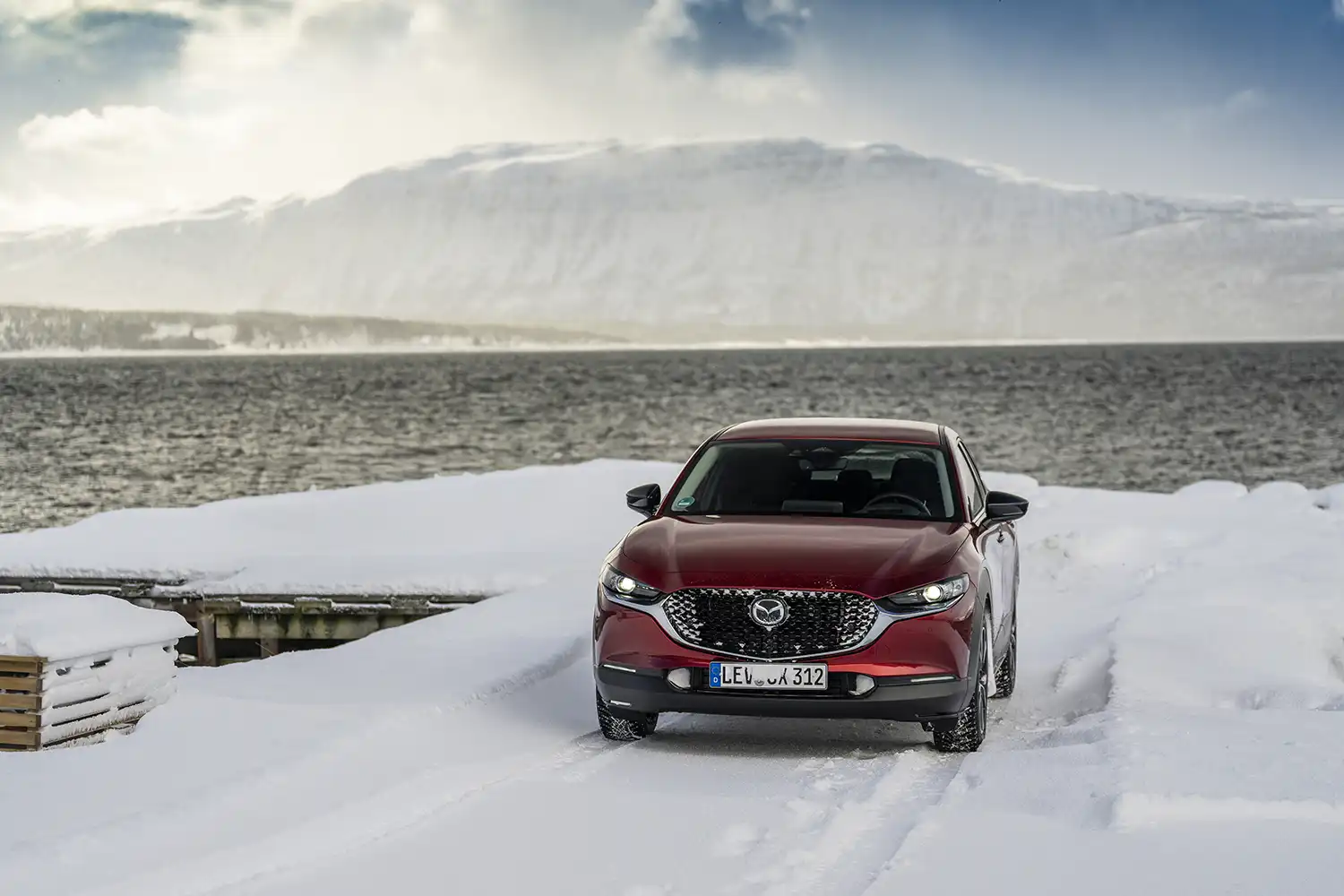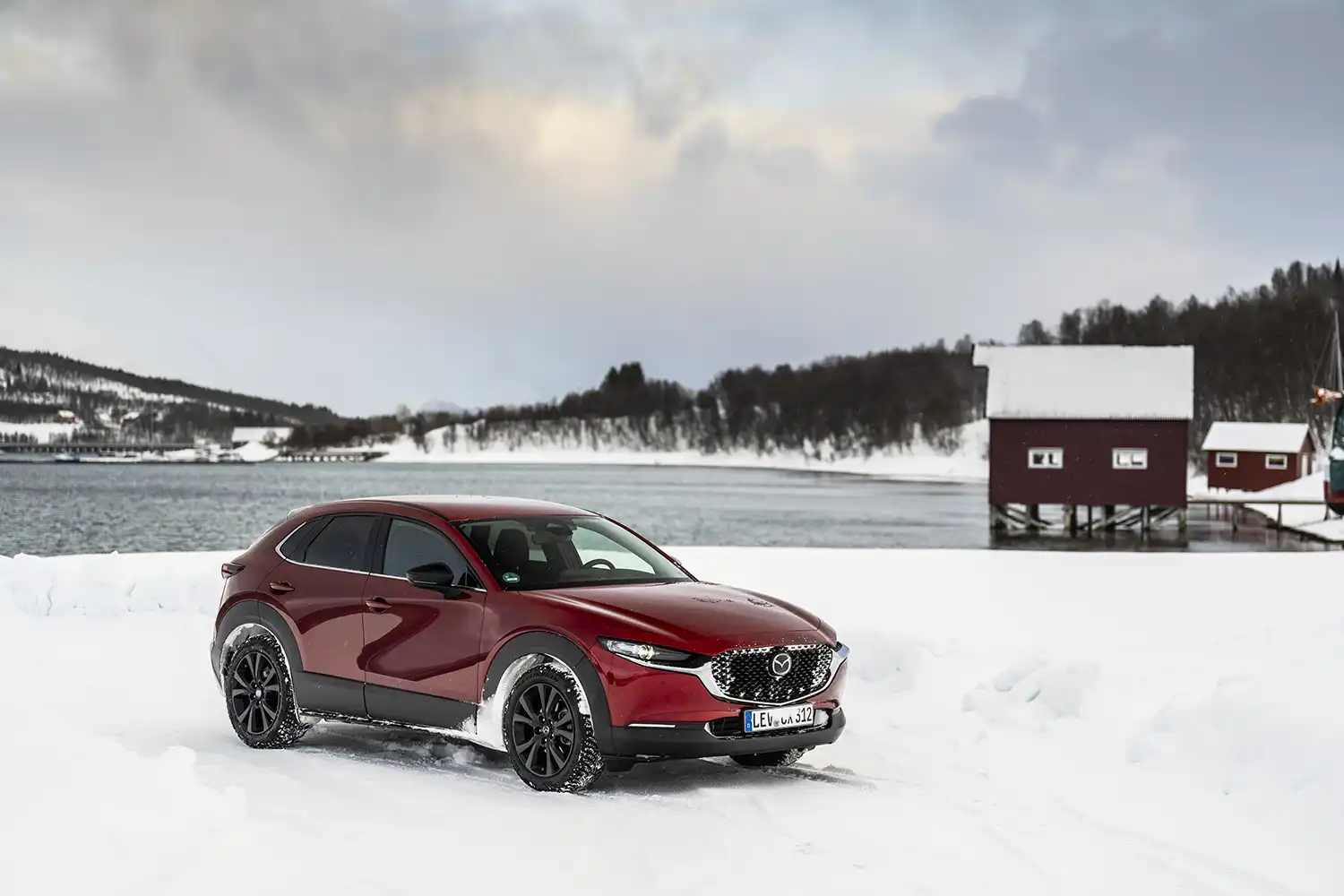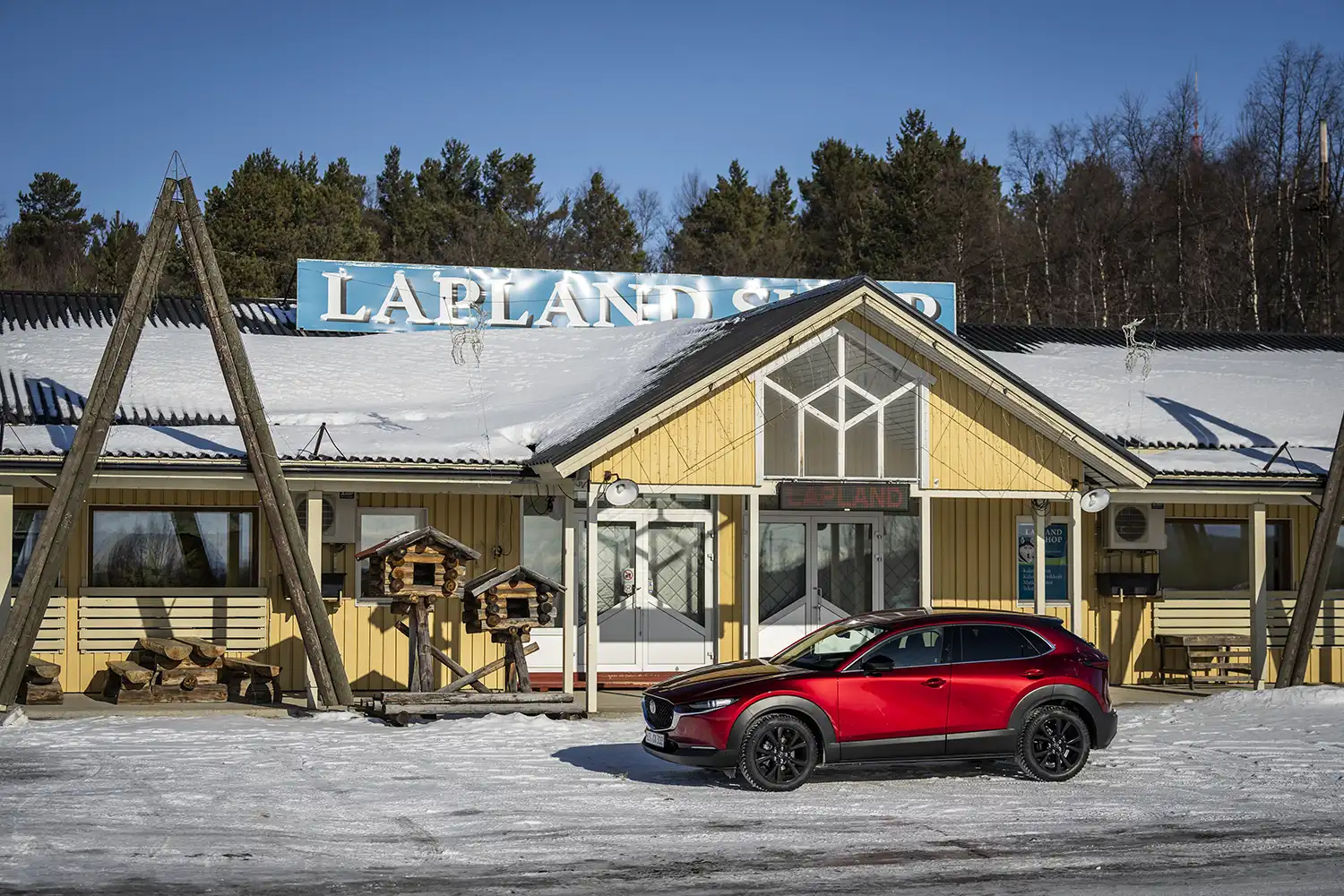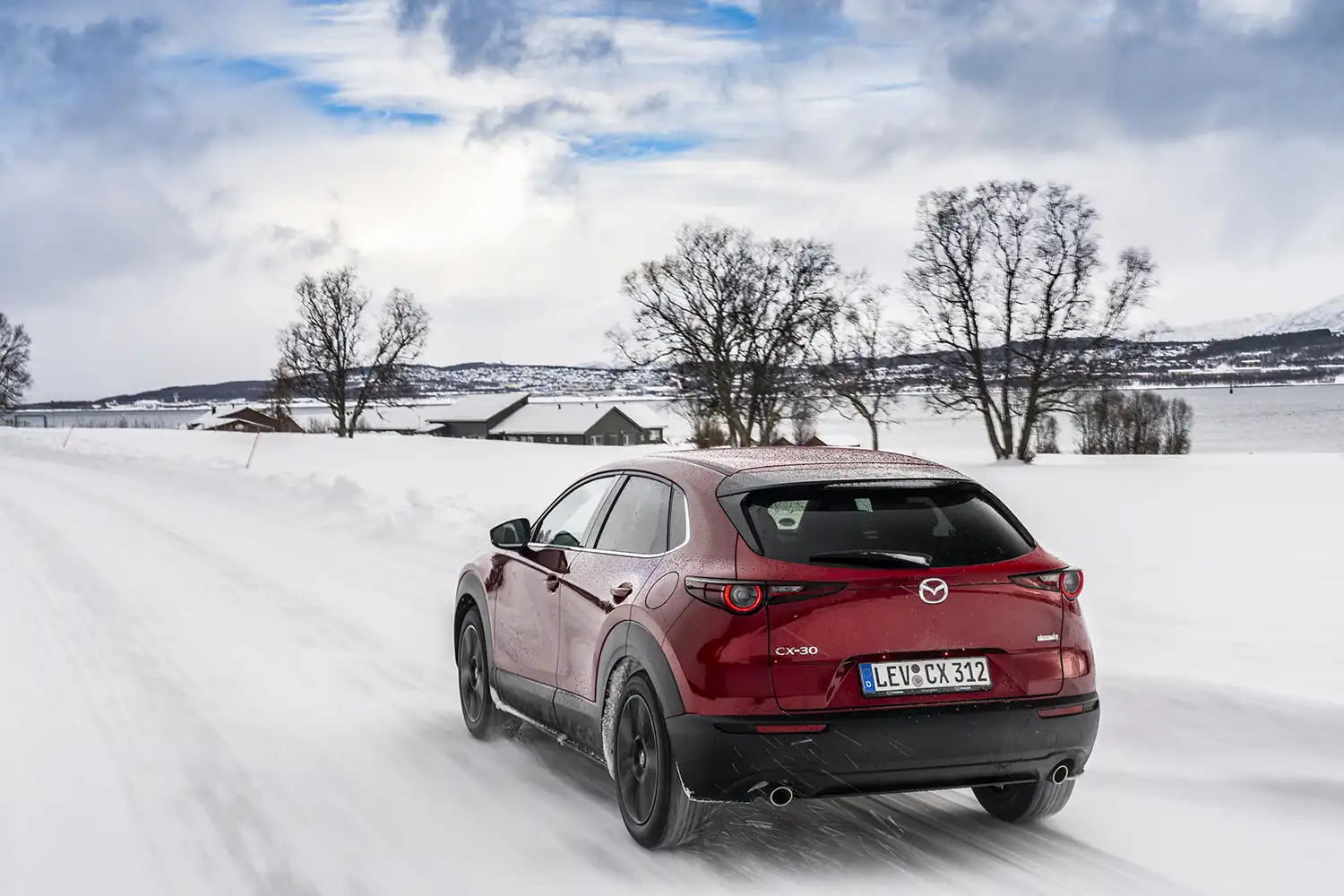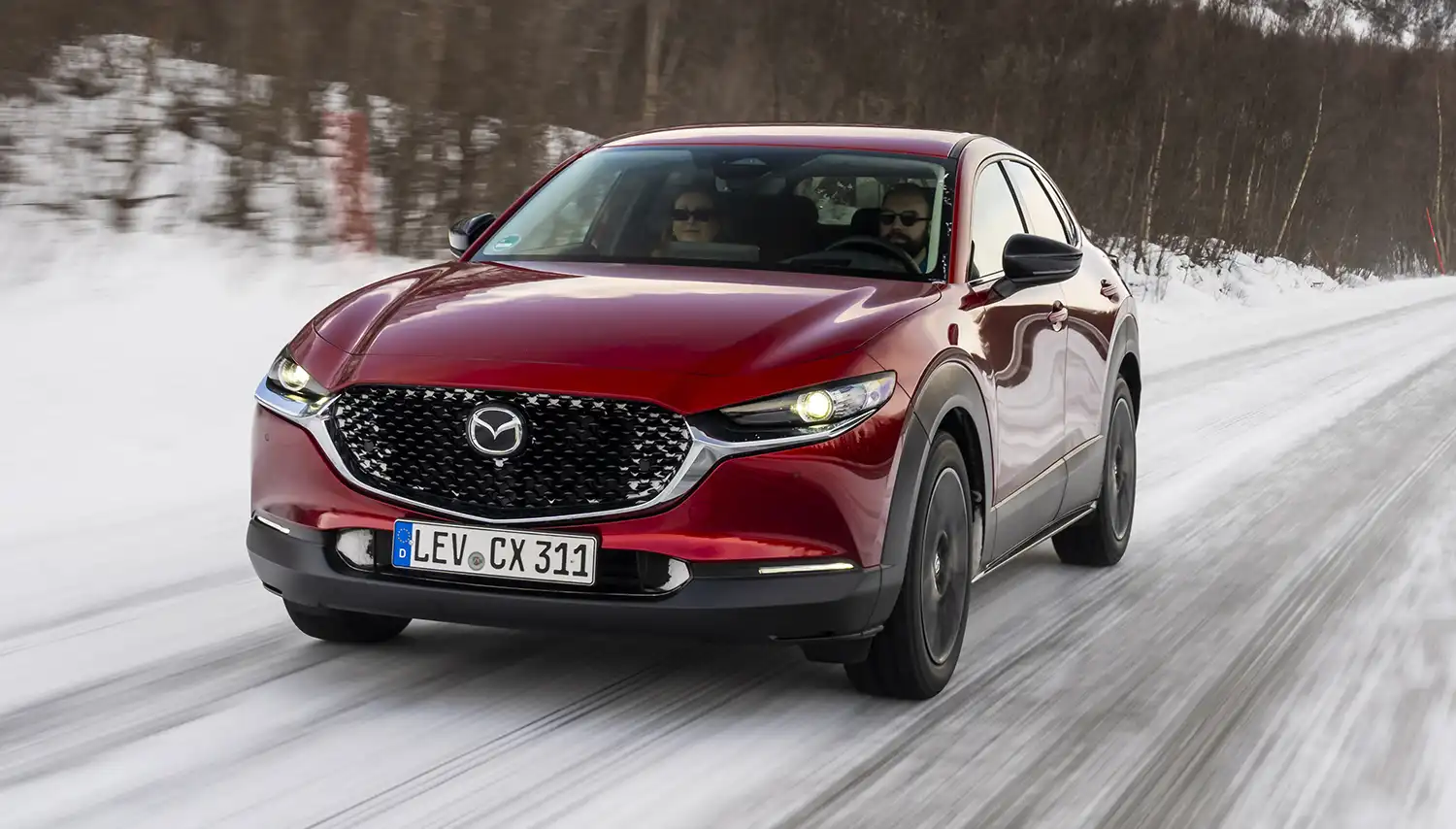
In a compelling demonstration of its commitment to a multi-solution approach for powertrains, Mazda sent twelve of its 2025 CX-30 models on an ambitious 1,300-mile journey across Sweden, Finland, and Norway. The unique aspect of this drive was that all vehicles were powered exclusively by a 100-per cent sustainable biofuel, highlighting its potential as a viable alternative to traditional fossil fuels in reducing greenhouse gas emissions.
The fleet of Mazda CX-30s embarked from Malmo, situated on Sweden’s Baltic coast, and journeyed north to Tromso, a coastal town in Norway located over 200 miles north of the Arctic Circle. After traversing 1,344 miles, the vehicles arrived having relied solely on a second-generation biofuel supplied by SUSTAIN. The 2025 Mazda CX-30 models participating in this test were equipped with the newly introduced 140ps e-Skyactiv G 2.5-litre petrol engine. This engine features cylinder de-activation technology and is paired with Mazda’s M Hybrid mild-hybrid system. This combination results in improved fuel economy and reduced emissions in real-world driving conditions compared to the outgoing 2.0-litre engine previously offered in the CX-30. The inclusion of this engine in both the 2025 Mazda CX-30 and the 2025 Mazda3 lineup underscores Mazda’s multi-faceted powertrain strategy, which continues to encompass the development of petrol and diesel engines alongside various levels of electrification, including hybrids, plug-in hybrids, mild hybrids, and battery electric vehicles.

Powertrain and Performance Details: The 2025 Mazda CX-30 models in this Baltic to Arctic drive were powered by the new 140ps e-Skyactiv G 2.5-litre petrol engine. This engine incorporates cylinder de-activation technology to enhance fuel efficiency. It is also coupled with Mazda’s M Hybrid mild-hybrid system, which further contributes to improved fuel economy and reduced emissions during everyday driving. While specific performance figures for this engine in the CX-30 were not detailed in the press release, the focus of the drive was to demonstrate the engine’s capability to run on 100% sustainable biofuel without any modifications, achieving an average fuel consumption of over 40mpg throughout the 1,344-mile journey.
Mazda’s ongoing engine development, integrated with electrification technologies, exemplifies the company’s commitment to powertrain innovation aimed at enhancing vehicle efficiency. This approach aligns well with the growing interest in sustainable fuels as a compelling alternative to fossil fuels, offering a pathway to reduce greenhouse gas emissions in conjunction with efficient combustion engines. The Baltic to Arctic drive serves as a tangible demonstration of the significant role sustainable fuels can play in the transition away from fossil fuels. Mazda UK has been powering its Heritage Fleet with sustainable fuel since June 2023, and previous initiatives, such as an MX-5 completing a lap of circuits in all four UK home nations and a quartet of MX-5s driving from Land’s End to John O’ Groats, both using sustainable fuel, further underscore this commitment.
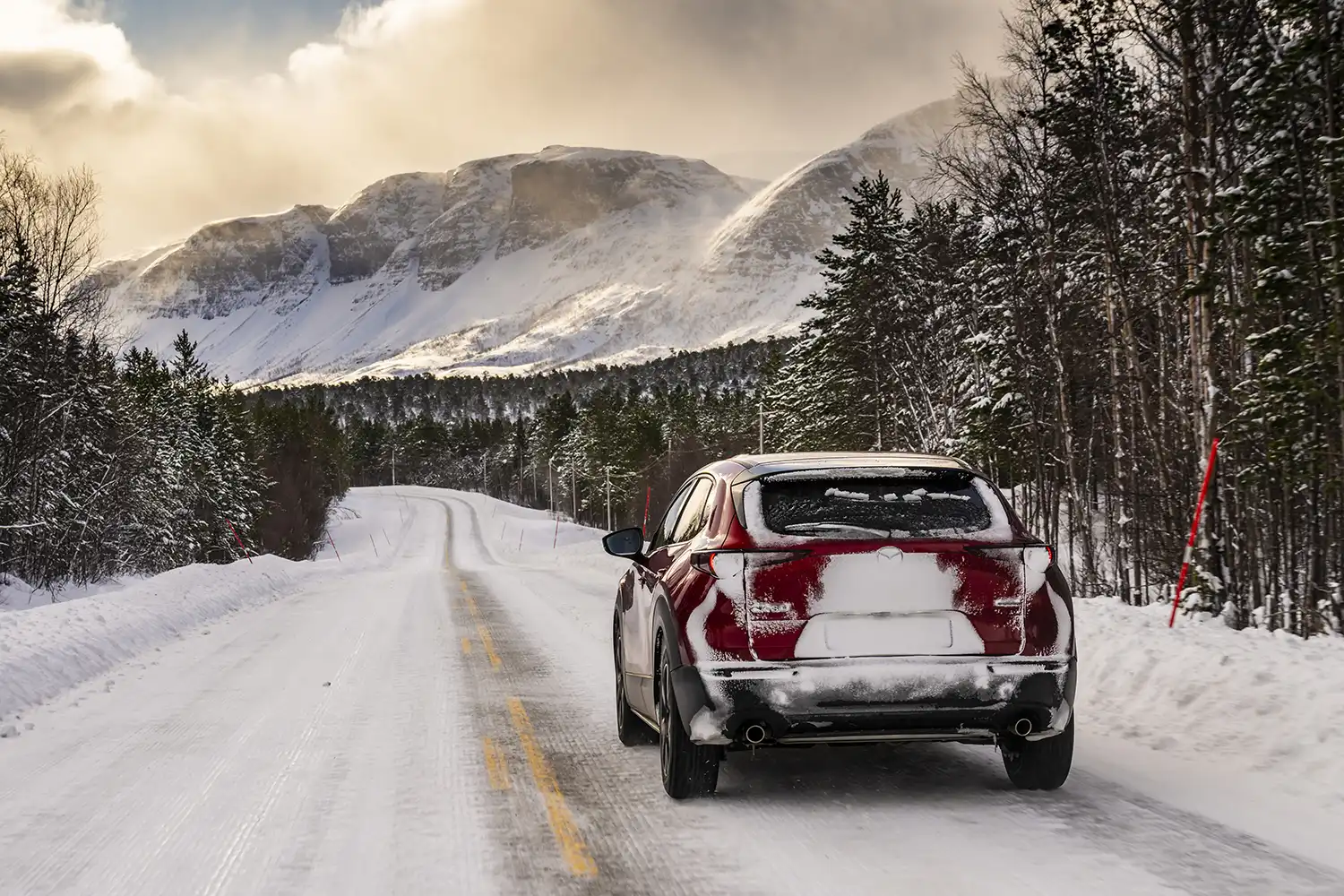
All of Mazda’s sustainable fuel initiatives have utilized fuel provided by SUSTAIN, highlighting the potential of these fuels to transition both modern and classic vehicles away from fossil fuels. These efforts also demonstrate how sustainable fuels can complement Mazda’s broader Multi-Solution approach in achieving climate neutrality. The biofuel used in the CX-30s for the Baltic to Arctic journey was a 100 per cent second-generation biofuel manufactured by SUSTAIN. This fuel is produced from sustainable components derived from agricultural waste that would not typically be used for animal or human consumption. This type of biofuel utilizes carbon that is already present in the atmosphere, captured by plants during growth and then released during combustion, contrasting with fossil fuels which release additional CO2 that has been stored underground.
Jeremy Thomson, Managing Director, Mazda Motors UK, commented on the successful drive: “at Mazda we will continue to develop the internal combustion engine to meet consumer demand in parallel with our battery electric development, as part of our multi-solution approach. In Japan we are researching and developing engines to run on biofuel as well as algae fuels and synthetic fuels, and in Europe we are a member of the e-fuel alliance. Our drive to the very north of Europe demonstrates the capability of the Mazda CX-30 in extreme conditions and the benefits of the internal combustion engine and advanced biofuels. In total we will have saved approximately 317kg of CO2 per car on a 1300-mile journey by using SUSTAIN advanced biofuel.”
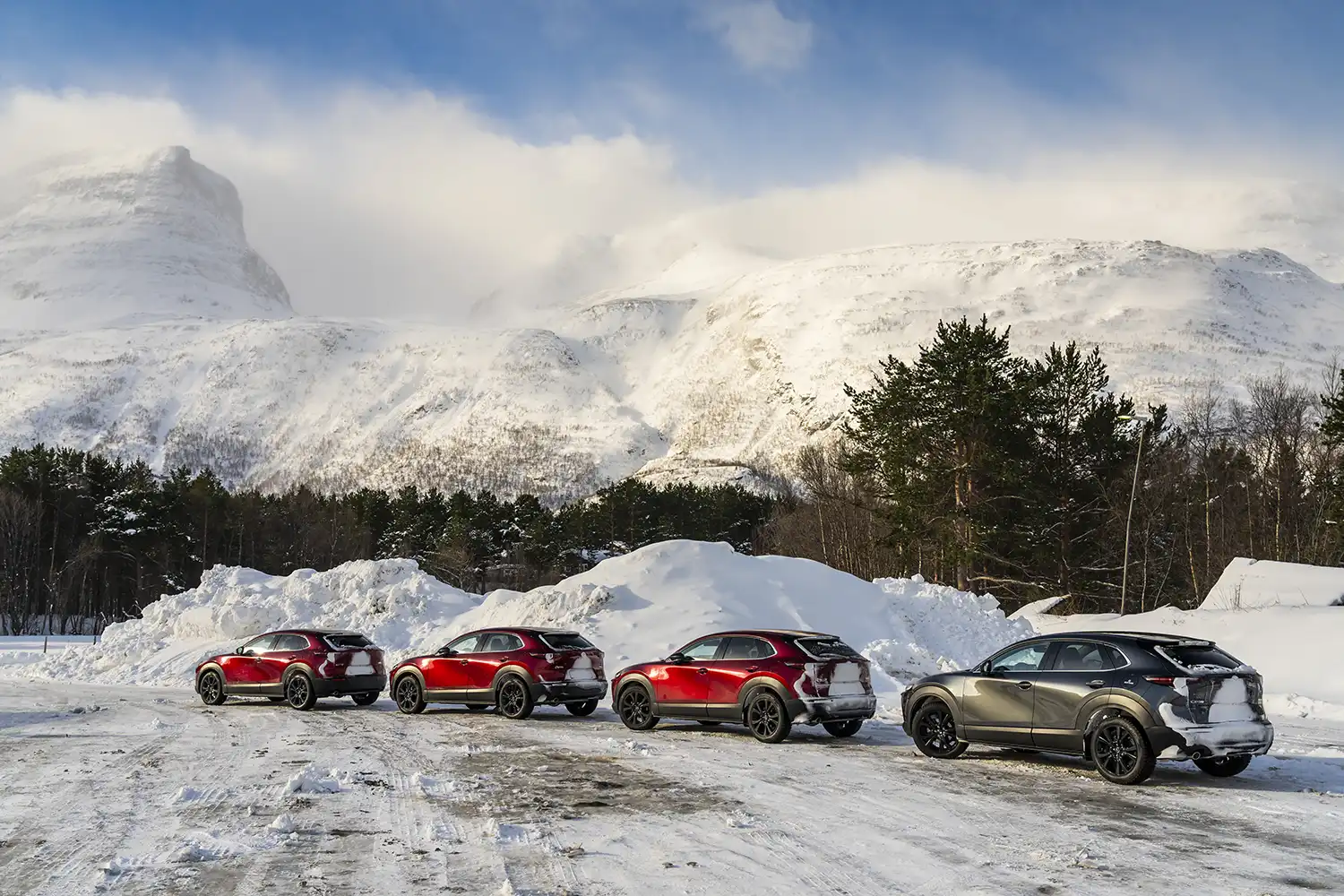
David Richardson, Director at SUSTAIN, added: “working with Mazda on this drive from the Baltic to the Arctic on 100% sustainable biofuel is something we’re extremely proud of. Electric vehicles are increasing in numbers, but there are still many millions of combustion engine cars on our roads. Activities like this help show how easily we can reduce the emissions from those vehicles, promoting this option to the many people who still don’t know what sustainable fuels are or how they work. If we want to make the most of this technology, we need to raise awareness, address the misunderstandings and secure support from those in power to enable sustainable fuel production to be scaled up, which could happen relatively quickly. After all, there is no silver bullet solution to tackle the environmental impact of the automotive sector – it’s time we start using all the available technologies to give us the best chance to make a real difference.”
Summary:
- Twelve 2025 Mazda CX-30s drove 1,300 miles from the Baltic to the Arctic.
- The vehicles were powered by 100% sustainable biofuel from SUSTAIN.
- The drive tested the new 140ps e-Skyactiv G 2.5-litre petrol engine with M Hybrid.
- The biofuel is made from agricultural waste and has zero fossil fuel content.
- The CX-30s averaged over 40mpg on the sustainable fuel without modifications.
- The initiative highlights the potential of sustainable fuels to reduce CO2 emissions.
- Mazda is committed to a multi-solution approach to powertrains, including sustainable fuels.
Disclaimer: The information presented in this article is based on a press release detailing Mazda’s Baltic to Arctic drive using sustainable fuel. Real-world fuel consumption and emissions may vary depending on driving conditions.
Source: Mazda
AI Assistance: Gemini
